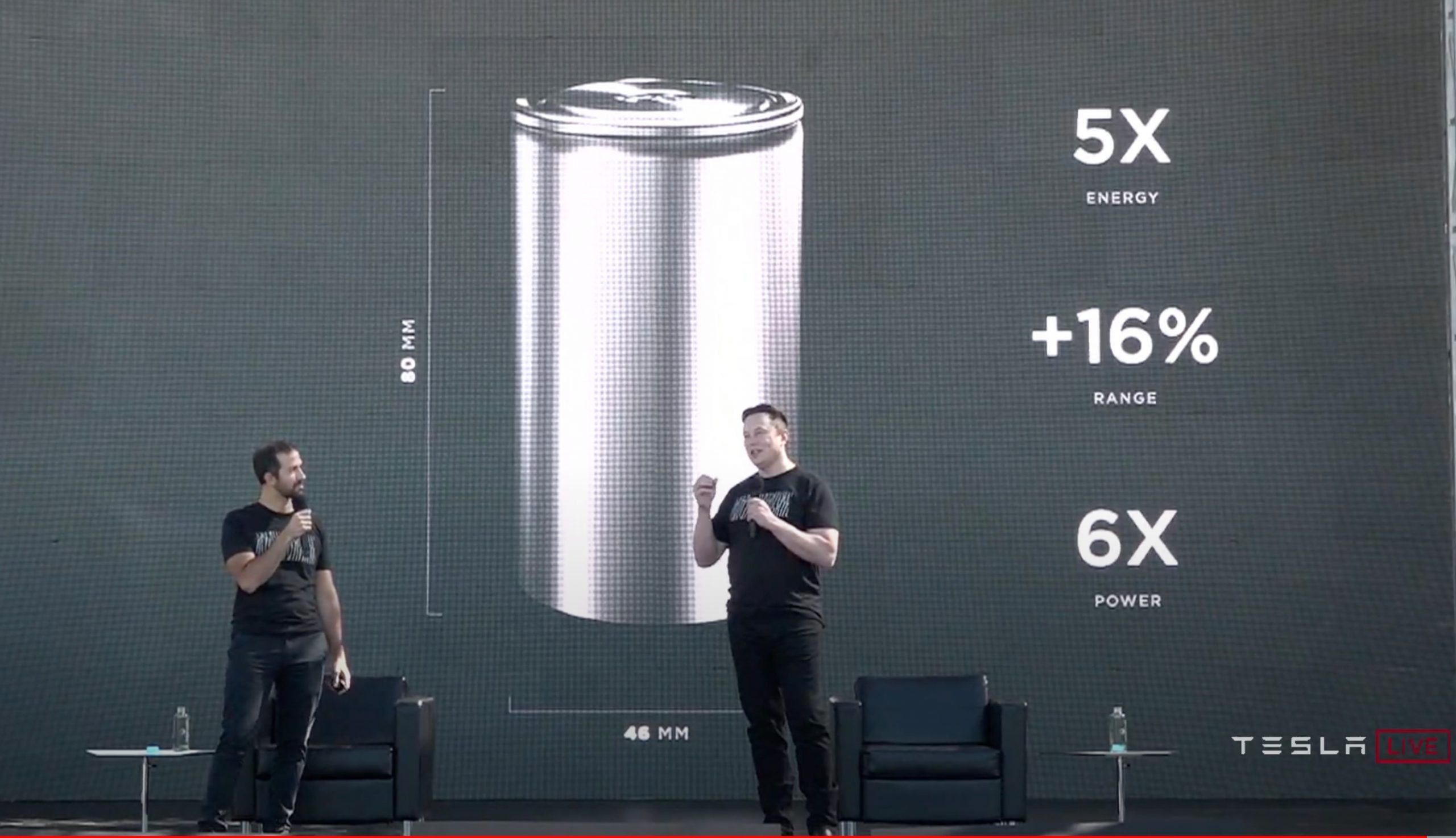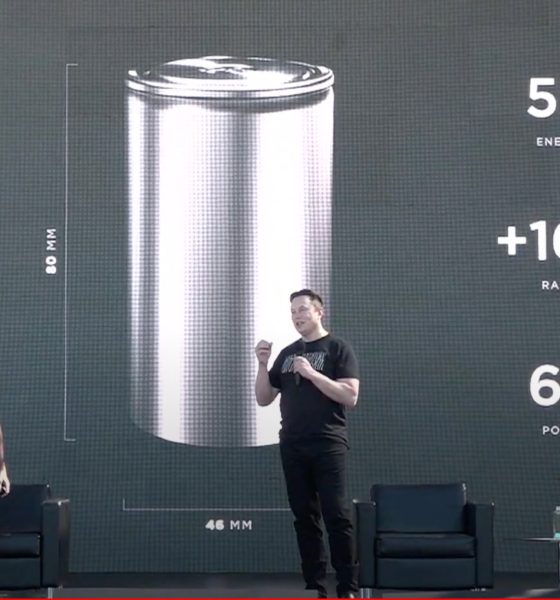

News
Tesla Giga Berlin’s 4680 supply won’t start in Germany, and it was never supposed to
Tesla’s plans for the initial battery needs and efforts at Giga Berlin were answered in late 2020 by the automaker during the Q3 Earnings Call. While things tend to change on a somewhat regular basis as far as plans for something as large as a vehicle manufacturing plant, Tesla knew that its initial battery fulfillment plans likely wouldn’t come from the planned Giga Berlin 4680 cell production lines. Instead, Tesla will rely on its Kato Road facility in Northern California, where the development and manufacturing of a new, revolutionary electric vehicle battery is taking place. Tesla also plans to utilize strong relationships with its battery cell manufacturers to solve supply concerns during Giga Berlin’s early production dates.
Concerns regarding Tesla’s planned timeline for Giga Berlin have arisen over the past several days, especially after a German media outlet said that CEO Elon Musk was extending the beginning of the German plant’s EV production efforts to January 2022. While the Giga Berlin timeline remains uncertain as far as the exact starting date, those close to the situation, including Brandenburg Economic Minister Jörg Steinbach, told Teslarati yesterday that production should begin in late Summer or early Fall 2021.
EXCLUSIVE: Tesla Giga Berlin isn’t facing a 6-month delay: German Minister
The concerns about Tesla Giga Berlin’s initial production date started to appear around the same time that reports began to surface about Tesla adding the 4680 battery manufacturing unit plans to its application. German regulators take a deliberate and somewhat extended time for large projects, as so many different factors are considered before anything is given ultimate approval. Some indicated that this extensive regulatory process would delay the production efforts altogether. Still, local sources in Germany have clarified that this only prolongs the project altogether and doesn’t have much of an effect on the start of production. The project will just take longer to complete considering Tesla added another element to the Giga Berlin offensive.
As previously mentioned, the addition of the 4680 line to the application likely caused confusion over whether the Tesla Giga Berlin production lines would activate on time. 4680 production at Berlin will not begin before or at the same time as Tesla’s vehicle production at the German plant. However, Tesla’s plans were never to have the Berlin 4680 lines handle the initial vehicle production at the plant. Tesla originally planned for the Kato Road 4680 lines to supply Giga Berlin with cells when they are available.
Drew Baglino, Tesla’s Senior Vice President of Powertrain and Energy Engineering, said during the Q3 2020 Earnings Call:
“We will incorporate 4680 design solutions into many applications in time across both energy and vehicle, and we can use our pilot production facility in Fremont to support the new factory in Berlin as it ramps.”
Additionally, Tesla’s battery suppliers are being called upon to assist in the initial efforts at Giga Berlin.
Musk announced during the most recent Q1 2021 Earnings Call that Tesla is about 12-18 months away from volume production of 4680 cells. While Tesla may be slightly behind schedule regarding the production of the new 4680 battery, there is no indication that it will delay Giga Berlin’s production altogether. In fact, Musk also acknowledged that its suppliers, who Tesla shares “very strong partnerships” with would be called upon to supply cells “as much as they possibly can.”
Musk said:
“…It appears as though we’re about 12 — probably not more than 18 months away from volume production of the 4680. Now at the same time, we are actually trying to have our cell supply of partners ramp up their supply as much as possible. So this is not something that is to the exclusion of suppliers. It is in conjunction with suppliers. So we want to be super clear about that. This is not about replacing suppliers. It is about supplementing the suppliers. So…and we have a very strong partnership with CATL, with Panasonic and LG. And we would…our request to our strategic partners for cell supply is, please make us…please supply us with as much as you possibly can. Provided the price is affordable, we will buy everything that they can make.”
This includes CATL, a Chinese battery producer who manufactures LFP cells for the Standard Range+ Model 3 at Giga Shanghai. CATL began the construction of a cell manufacturing facility in Germany in 2019. LG Chem also started the construction of an EV battery cell manufacturing facility in Poland in 2017, which could be used to supplement Tesla’s battery efforts in Germany. These suppliers have both assisted Tesla with cells in the past, and these companies will likely supplement Tesla’s needs at Giga Berlin, as Musk requested during the Q1 2021 Earnings Call.
Tesla has been aware that the 4680 lines in Berlin will not take care of the initial production phases at the factory. Instead, it will rely on suppliers and its Kato Road 4680 lines in the United States to take care of the first months of production at Giga Berlin.

News
Tesla FSD fleet is nearing 7 billion total miles, including 2.5 billion city miles
As can be seen on Tesla’s official FSD webpage, vehicles equipped with the system have now navigated over 6.99 billion miles.

Tesla’s Full Self-Driving (Supervised) fleet is closing in on almost 7 billion total miles driven, as per data posted by the company on its official FSD webpage.
These figures hint at the massive scale of data fueling Tesla’s rapid FSD improvements, which have been quite notable as of late.
FSD mileage milestones
As can be seen on Tesla’s official FSD webpage, vehicles equipped with the system have now navigated over 6.99 billion miles. Tesla owner and avid FSD tester Whole Mars Catalog also shared a screenshot indicating that from the nearly 7 billion miles traveled by the FSD fleet, more than 2.5 billion miles were driven inside cities.
City miles are particularly valuable for complex urban scenarios like unprotected turns, pedestrian interactions, and traffic lights. This is also the difference-maker for FSD, as only complex solutions, such as Waymo’s self-driving taxis, operate similarly on inner-city streets. And even then, incidents such as the San Francisco blackouts have proven challenging for sensor-rich vehicles like Waymos.
Tesla’s data edge
Tesla has a number of advantages in the autonomous vehicle sector, one of which is the size of its fleet and the number of vehicles training FSD on real-world roads. Tesla’s nearly 7 billion FSD miles then allow the company to roll out updates that make its vehicles behave like they are being driven by experienced drivers, even if they are operating on their own.
So notable are Tesla’s improvements to FSD that NVIDIA Director of Robotics Jim Fan, after experiencing FSD v14, noted that the system is the first AI that passes what he described as a “Physical Turing Test.”
“Despite knowing exactly how robot learning works, I still find it magical watching the steering wheel turn by itself. First it feels surreal, next it becomes routine. Then, like the smartphone, taking it away actively hurts. This is how humanity gets rewired and glued to god-like technologies,” Fan wrote in a post on X.
News
Tesla starts showing how FSD will change lives in Europe
Local officials tested the system on narrow country roads and were impressed by FSD’s smooth, human-like driving, with some calling the service a game-changer for everyday life in areas that are far from urban centers.

Tesla has launched Europe’s first public shuttle service using Full Self-Driving (Supervised) in the rural Eifelkreis Bitburg-Prüm region of Germany, demonstrating how the technology can restore independence and mobility for people who struggle with limited transport options.
Local officials tested the system on narrow country roads and were impressed by FSD’s smooth, human-like driving, with some calling the service a game-changer for everyday life in areas that are far from urban centers.
Officials see real impact on rural residents
Arzfeld Mayor Johannes Kuhl and District Administrator Andreas Kruppert personally tested the Tesla shuttle service. This allowed them to see just how well FSD navigated winding lanes and rural roads confidently. Kruppert said, “Autonomous driving sounds like science fiction to many, but we simply see here that it works totally well in rural regions too.” Kuhl, for his part, also noted that FSD “feels like a very experienced driver.”
The pilot complements the area’s “Citizen Bus” program, which provides on-demand rides for elderly residents who can no longer drive themselves. Tesla Europe shared a video of a demonstration of the service, highlighting how FSD gives people their freedom back, even in places where public transport is not as prevalent.
What the Ministry for Economic Affairs and Transport says
Rhineland-Palatinate’s Minister Daniela Schmitt supported the project, praising the collaboration that made this “first of its kind in Europe” possible. As per the ministry, the rural rollout for the service shows FSD’s potential beyond major cities, and it delivers tangible benefits like grocery runs, doctor visits, and social connections for isolated residents.
“Reliable and flexible mobility is especially vital in rural areas. With the launch of a shuttle service using self-driving vehicles (FSD supervised) by Tesla in the Eifelkreis Bitburg-Prüm, an innovative pilot project is now getting underway that complements local community bus services. It is the first project of its kind in Europe.
“The result is a real gain for rural mobility: greater accessibility, more flexibility and tangible benefits for everyday life. A strong signal for innovation, cooperation and future-oriented mobility beyond urban centers,” the ministry wrote in a LinkedIn post.
News
Tesla China quietly posts Robotaxi-related job listing
Tesla China is currently seeking a Low Voltage Electrical Engineer to work on circuit board design for the company’s autonomous vehicles.

Tesla has posted a new job listing in Shanghai explicitly tied to its Robotaxi program, fueling speculation that the company is preparing to launch its dedicated autonomous ride-hailing service in China.
As noted in the listing, Tesla China is currently seeking a Low Voltage Electrical Engineer to work on circuit board design for the company’s autonomous vehicles.
Robotaxi-specific role
The listing, which was shared on social media platform X by industry watcher @tslaming, suggested that Tesla China is looking to fill the role urgently. The job listing itself specifically mentions that the person hired for the role will be working on the Low Voltage Hardware team, which would design the circuit boards that would serve as the nervous system of the Robotaxi.
Key tasks for the role, as indicated in the job listing, include collaboration with PCB layout, firmware, mechanical, program management, and validation teams, among other responsibilities. The role is based in Shanghai.
China Robotaxi launch
China represents a massive potential market for robotaxis, with its dense urban centers and supportive policies in select cities. Tesla has limited permission to roll out FSD in the country, though despite this, its vehicles have been hailed as among the best in the market when it comes to autonomous features. So far, at least, it appears that China supports Tesla’s FSD and Robotaxi rollout.
This was hinted at in November, when Tesla brought the Cybercab to the 8th China International Import Expo (CIIE) in Shanghai, marking the first time that the autonomous two-seater was brought to the Asia-Pacific region. The vehicle, despite not having a release date in China, received a significant amount of interest among the event’s attendees.








